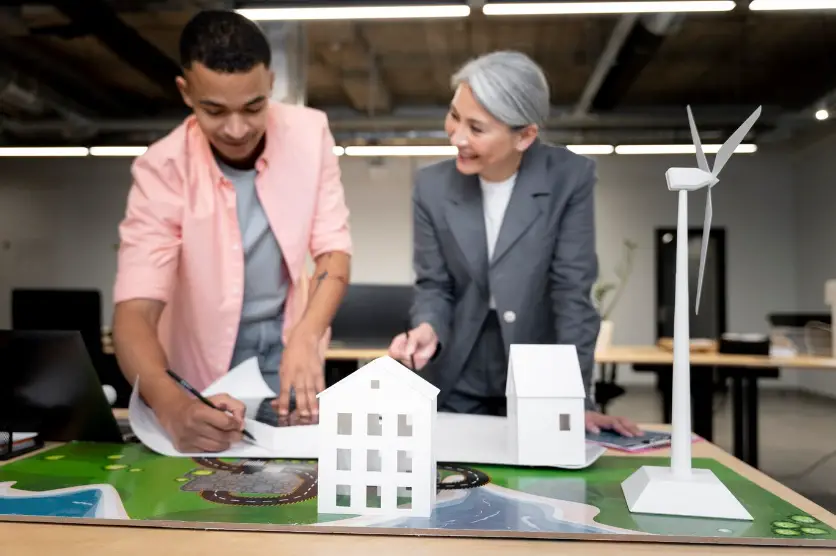Renewing Spaces: Sustainable Practices in Building

The integration of sustainable practices in building design and construction has become increasingly vital in fostering environmentally responsible and energy-efficient spaces.
This blog post delves into innovative strategies and approaches that prioritize sustainability, conservation, and eco-conscious principles in the realm of architecture and building development.
Embracing Eco-Conscious Architecture and Design
Sustainable building practices encompass architectural design that prioritizes energy efficiency, natural lighting, passive heating and cooling, and the use of eco-friendly materials. Embracing biophilic design principles and incorporating green spaces within urban environments contribute to creating healthier, more sustainable living and working spaces.
Utilizing Renewable and Recycled Materials
The utilization of renewable materials such as sustainably harvested wood, bamboo, and recycled content products significantly reduces the environmental impact associated with traditional construction materials. Embracing recycled materials, including reclaimed wood, recycled glass, and repurposed metal, presents opportunities for minimizing waste and promoting circular economy principles in building projects.
Energy-Efficient Building Systems and Technologies
Integrating energy-efficient systems and technologies, such as high-performance insulation, smart building automation, solar panels, and geothermal heating and cooling, plays a pivotal role in reducing energy consumption and mitigating the carbon footprint of buildings. Implementing passive design strategies and efficient HVAC systems further enhances the sustainability of built environments.
Promoting Solar Energy Solutions in Idaho
In the context of integrating renewable energy systems, promoting solar energy solutions has gained momentum, particularly in regions like Idaho. Idaho’s ample sunshine provides an ideal setting for solar power generation, making it a strategic location for the adoption of solar panels and related technologies. By emphasizing solar energy, Idaho not only harnesses its natural resources for sustainable power but also moves towards reducing reliance on fossil fuels, aligning with broader goals of sustainability and energy independence.
Green Building Certifications and Standards
Certifications such as LEED (Leadership in Energy and Environmental Design), BREEAM (Building Research Establishment Environmental Assessment Method), and WELL Building Standard provide frameworks for achieving and recognizing sustainable building performance, occupant health, and environmental responsibility. Adhering to these standards demonstrates a commitment to creating healthy, resource-efficient, and high-performing buildings.
Sustainable Urban Development and Community Planning
Incorporating sustainable urban development practices, including mixed land use, walkable neighborhoods, green infrastructure, and public transportation accessibility, fosters vibrant communities while reducing the environmental impact of urban growth. Prioritizing green building and sustainable community planning contributes to creating resilient, inclusive, and environmentally conscious urban spaces.
Collaborative Industry Engagement and Advocacy
Engaging with industry professionals, architects, builders, and developers to advocate for sustainable building practices and environmentally responsible design promotes the widespread adoption of eco-conscious principles. Collaboration within the building industry fosters knowledge sharing, innovation, and collective action towards advancing sustainability in building development and construction practices.
Conclusion
Adopting sustainable practices in building design and construction is crucial for addressing environmental challenges, combating climate change, and creating healthier, resilient environments.
By embracing eco-conscious architecture, using renewable materials, and promoting energy efficiency, stakeholders can contribute to a greener future.
Sustainable building not only benefits the environment but also enhances life quality, conserves resources, and demonstrates a commitment to harmonizing with nature. Through collective efforts, sustainable practices in building nurture communities and promote an environmentally responsible society.
